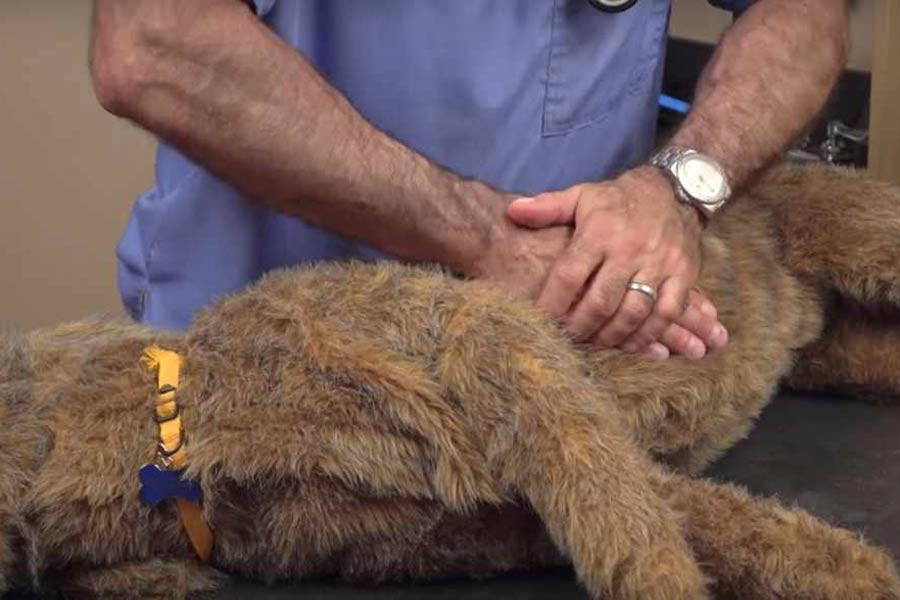In an emergency knowing how to conduct CPR on your dog could save their life. Dr. Jerry Klein, Chief Veterinary Officer in American Kennel Club, demonstrates how to give CPR (cardiopulmonary resuscitation) to dogs until they can reach a veterinary.
What is CPR For Dogs?
CPR involves chest compressions with or without artificial respiration. It is ONLY used on dogs when you cannot feel or hear the dog’s heartbeat and the dog is NOT breathing. This can occur for a few reasons: trauma, choking, or illness. Before performing CPR for dogs, keep in mind that CPR is potentially hazardous and can cause physical complications or fatal damage if performed on a healthy dog.
CPR should only be performed when necessary. Ideally, you will be able to have someone call your veterinarian for guidance to perform dog CPR on the way to the clinic. Make sure the dog’s airway is clear of any objects before proceeding. Follow different guidelines depending on the size and breed of the dog you are assisting.

Situations to Use CPR on Your Dog
Perform CPR on your dog if you can’t yet reach a veterinarian and:
- the dog is nonresponsive OR
- the dog isn’t breathing OR
- the dog has no heartbeat
CPR For Small Dogs
For the purposes of CPR, a small dog is considered any dog under 30 pounds.
- Form your hands around the dog’s rib cage
- Using your thumbs and fingers, press on the chest about 1/3 of the way down
CPR For Large Breeds
For the purposes of CPR, a large dog is considered any dog 30 pounds and over.
- Form your palms one on top of the other on the widest part of the dog’s rib cage
- Using your hands, press on the chest about 1/4 of the way down

CPR For Dogs Instructions
If you have to try to perform CPR, just like in people, the mainstay are chest compressions. Make sure the airway is clear, and the dog should not be breathing. You shouldn’t do chest compression if your dog is alert and able to bite you.
If you perform chest compressions, act quickly, but steadily. Do your chest compressions firmly — not too fast and not too slow. Don’t stop for at least five minutes.
As a good rule of thumb, sing the song, Staying Alive (ah, ah, ah, ah, staying alive) and press down on each “ah.” Someone should be trying to get you to a veterinarian, but in the meantime, you can try doing this for five full minutes. In a large breed, you have to use more effort. If you aren’t able to get to the vet yet, try to get a veterinarian on the phone to walk you through these steps.
After five minutes, if there’s no response, you can’t feel a heartbeat, and there’s no breathing, you can do another cycle. You may find it becomes less successful with each cycle. You can do up to three cycles. The chance of resuscitating after three cycles is very low.
The post How to Perform Dog CPR on Small & Large Pets appeared first on American Kennel Club.



0 Comments
Recommended Comments
There are no comments to display.